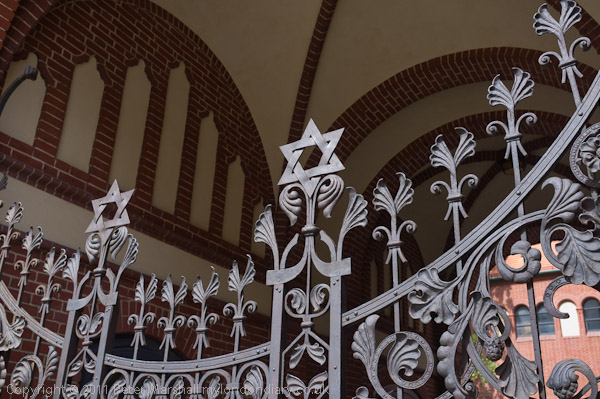
Rykestrasse Synagogue, Germany’s largest synagogue, was built in 1903-4. On “Kristallnacht” (Night of Broken Glass), 9 November 1938, it was trashed but not burnt down as it is a part of a residential building, and in 1944 it was bought by the borough of Prenzlauer Berg. During the war it was used as a furniture store. It came back into use in May 1945 and various repairs were made over the years but it was only finally restored to its pre-was splendour in 2007.
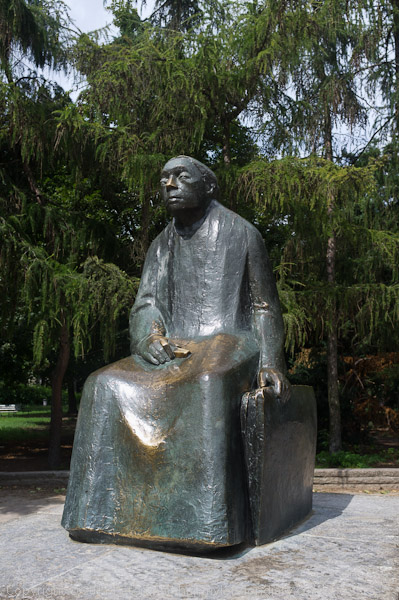
Painter and sculptor Käthe Kollwitz (1867-1945) was born in Königsberg, Prussia and first came to Berlin to study art in 1883. She returned in 1891 to live in Prenzlauer Berg after marrying Karl Kollwitz, a doctor for the Berlin poor, living in the same large apartment until she was evacuated from Berlin in 1943; a few months later the building was destroyed by bombing. Weissenburger Strasse where she and Karl lived at 56A was renamed Kollwitzstrasse in 1947 in honour of her. A health centre built in Prenzlauer Allee in 1983 is named after Karl. The statue (1956-8) in Kolwitzplatz is by Gustav Seitz.
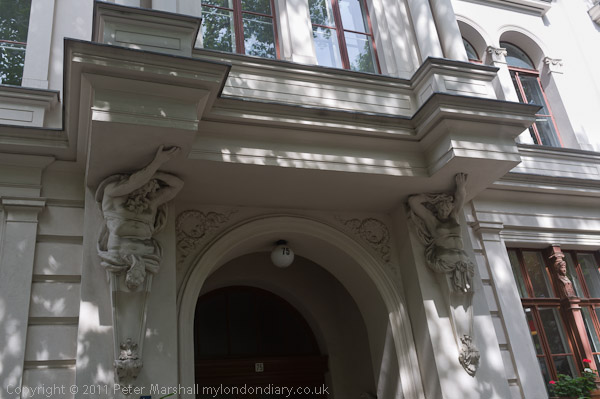
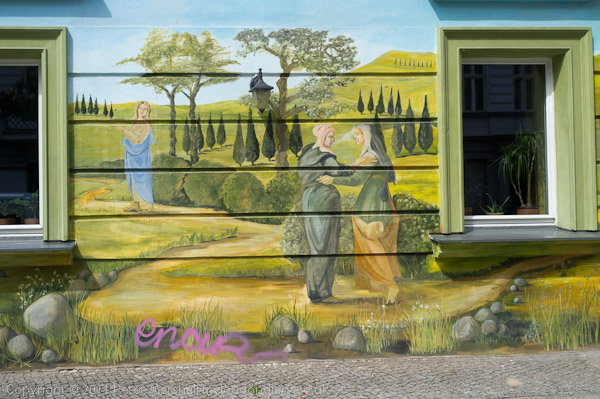
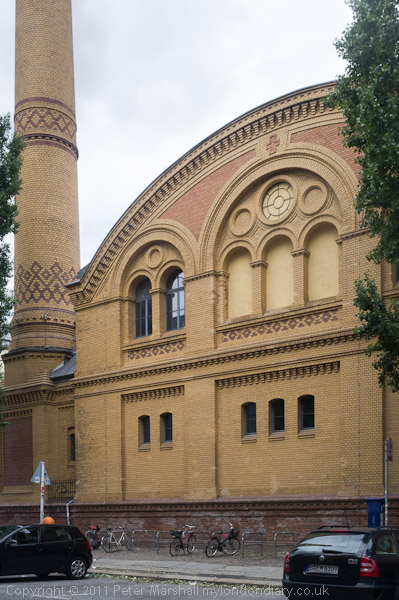
KulturBrauerei is a huge leisure/entertainment/arts complex using the historic buildings of the the former Schultheiss brewery, begun in the 1800s, which expanded greatly and was once the largest in the world. The brewery closed in 1967, and in 1974 was declared a national monument. It now has theatre, nightclub, music perfomances, markets and more in a slightly bland gentrifiers cultutral mould.
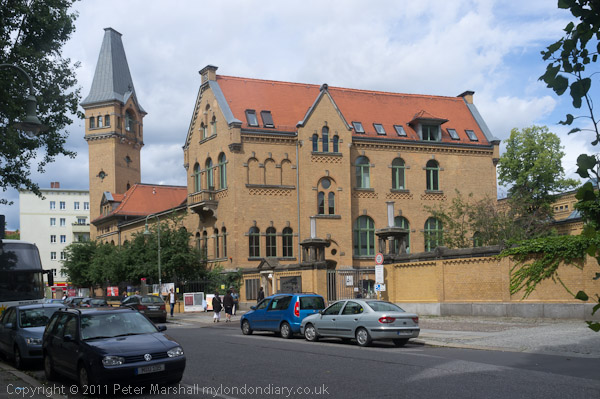
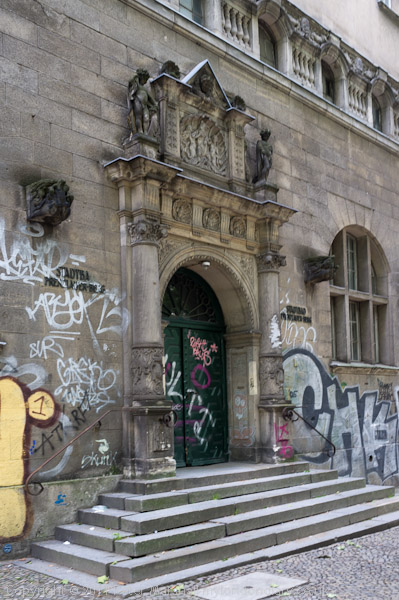
Stadt Bad Prenzlauer-Berg in Oderberger Strasse, designed by city architect Ludwig Hoffmann and built in 1899-1902 included a small swimming pool as well as at the time much needed washing and bathing facilities for the population in these municipal baths. Although built to look like a Renaissance palace, the interior was apparently organised on rational lines with 63 showers and bath tubs. Out of use since cracks in the ceiling were discovered in 1986s when I photographed the exterior, the building has now been restored as a hotel and the public can visit them again.
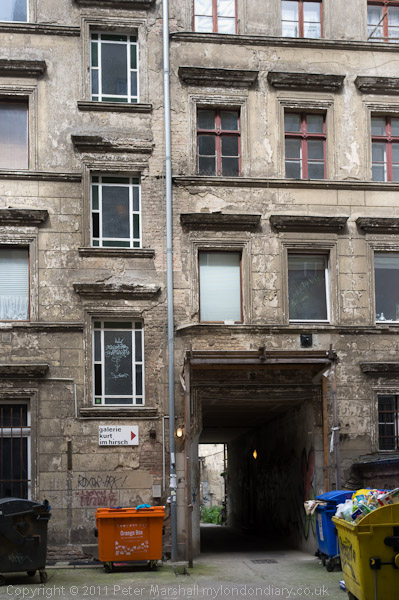
Kastanienallee, 12 with a doorway leading through to a whole series of courtyards. These were widely squatted after the unification of Germany, and the whole complex here became a well-known area full of hippies.
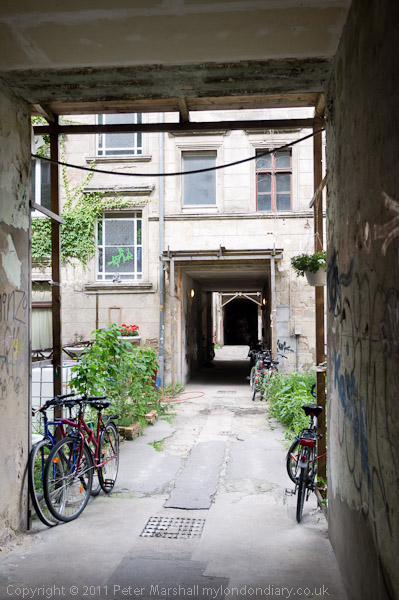
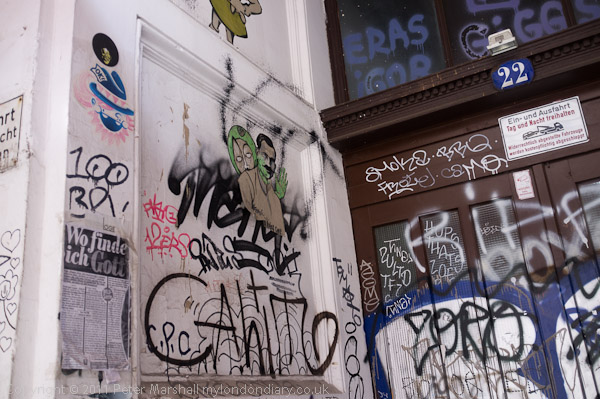
Kastanienallee
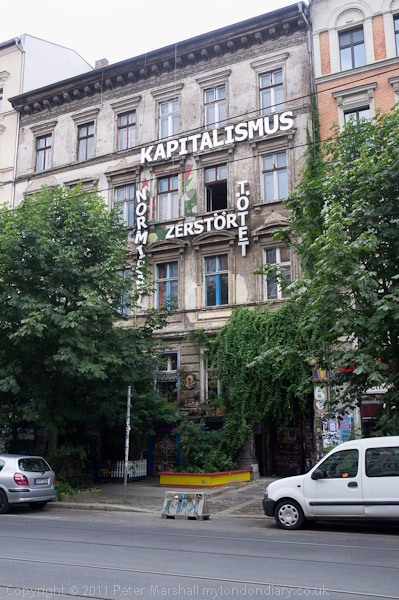
KAPITALISMUS (capitalism) ZERSTÖRT (destroyed) TÖTET (killing) NORMIERT (normalised)
More from my walk around Prenzlauer Berg, Berlin to follow shortly.
Previous Berlin post
______________________________________________________
There are no adverts on this site and it receives no sponsorship, and I like to keep it that way. But it does take a considerable amount of my time and thought, and if you enjoy reading it, a small donation – perhaps the cost of a beer – would be appreciated.
My London Diary : London Photos : Hull : River Lea/Lee Valley : London’s Industrial Heritage
All photographs on this and my other sites, unless otherwise stated, are taken by and copyright of Peter Marshall, and are available for reproduction or can be bought as prints.
To order prints or reproduce images
________________________________________________________